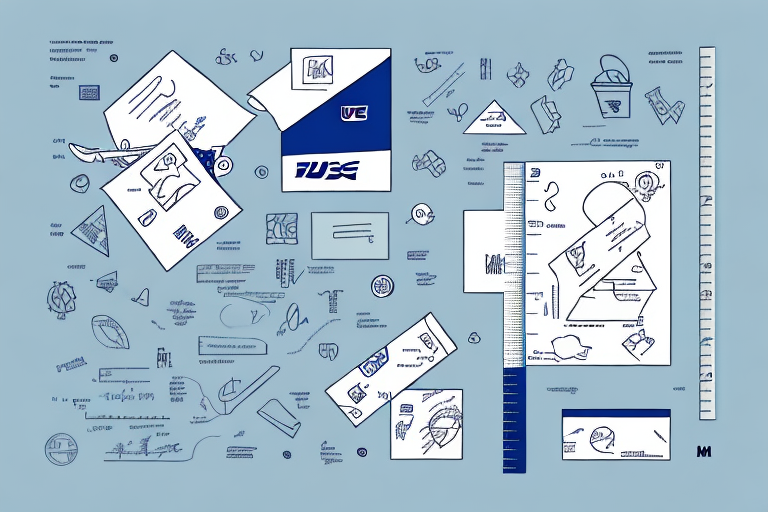What is the Minimum Package Size for USPS Shipments?
Understanding the minimum package size for USPS shipments is crucial for ensuring your items are shipped efficiently and cost-effectively. The package size can influence both shipping costs and delivery times. This comprehensive guide delves into USPS package size requirements, factors influencing these requirements, comparisons with other shipping carriers, and tips to optimize your shipping strategy.
USPS Package Size and Weight Guidelines
Understanding Size Restrictions
The United States Postal Service (USPS) has specific size and weight restrictions based on the selected shipping service. For example:
- Priority Mail: Maximum combined length and girth is 108 inches.
- First-Class Mail: Maximum dimensions are 15 inches in length, 12 inches in width, and 0.75 inches in thickness.
- USPS Retail Ground: Maximum combined length and girth is 130 inches.
These dimensions ensure that packages can be handled efficiently through the USPS system. Exceeding these limits may result in additional fees or rejection of the shipment.
Weight Restrictions
Weight limits also vary by service:
- Priority Mail and Priority Mail Express: Up to 70 pounds.
- First-Class Mail: Up to 3.5 ounces.
- Standard Post and Media Mail: Up to 70 pounds.
- USPS Retail Ground: Up to 70 pounds for domestic and 70 pounds varies internationally.
Accurately weighing your package is essential to avoid unexpected charges and ensure timely delivery.
For detailed and up-to-date information, refer to the USPS official guidelines.
Determining the Minimum Package Size for Your Shipment
To determine the minimum package size for your USPS shipment, consider the following factors:
- Item Dimensions and Weight: Measure the length, width, and height of your items to ensure they fit within USPS guidelines.
- Shipping Destination: International shipments may have different requirements compared to domestic ones.
- Packaging Materials: Use sturdy boxes and proper cushioning to protect your items and comply with USPS standards.
Using the USPS Shipping Calculator can help you determine the appropriate package size and shipping costs based on your specific needs.
Factors Influencing USPS Minimum Package Size
Type of Item Being Shipped
Fragile or irregularly shaped items may require larger packaging to provide adequate protection during transit, impacting the minimum package size.
Destination and Shipping Service
International destinations might have stricter size and weight restrictions due to customs regulations. Additionally, choosing a faster shipping service may influence the packaging requirements.
Packaging Materials
Using high-quality packaging materials can prevent damage and may allow for more efficient use of space, potentially reducing the overall package size.
Tips for Selecting the Right Package Size
- Measure Accurately: Ensure all dimensions are precise to comply with USPS guidelines.
- Choose Appropriate Packaging: Select boxes and envelopes that fit your items snugly to minimize movement during shipping.
- Consider Shipping Services: Different USPS services have varying size and weight limitations; choose the one that best fits your needs.
- Weigh Your Package: Use a reliable scale to determine the package's weight to avoid additional charges.
By following these tips, you can optimize your package size, reduce shipping costs, and ensure your items arrive safely.
Comparing USPS Package Sizes with Other Carriers
Different shipping carriers have varying minimum and maximum package size requirements. Here's a comparison:
- USPS: Minimum size varies by service, with a maximum combined length and girth of up to 130 inches for certain services.
- FedEx: Minimum package dimensions are 3 inches in all dimensions, with a maximum combined length and girth of 165 inches.
- UPS: Minimum package size is 6 inches in all dimensions, with a maximum combined length and girth of 165 inches.
Understanding these differences is essential when selecting the right carrier for your shipping needs.
Impact of Package Size on Shipping Costs
The size of your package directly affects the shipping cost. Larger packages generally incur higher shipping fees due to increased handling and transportation resources required. Additionally, weight plays a significant role in determining the overall cost. To minimize expenses:
- Use the smallest possible packaging that adequately protects your items.
- Weigh packages before shipping to avoid overpaying for weight.
- Consider using flat-rate boxes offered by USPS for predictable pricing.
For an accurate estimate, utilize the USPS Shipping Calculator.
Benefits of Adhering to USPS Package Size Guidelines
- Cost Efficiency: Avoid unexpected fees by complying with size and weight restrictions.
- Timely Delivery: Properly sized packages are less likely to face delays in transit.
- Environmental Impact: Smaller packages require fewer resources to transport, reducing your carbon footprint.
- Streamlined Shipping Process: Uniform package sizes facilitate easier sorting and handling by USPS.
Avoiding Penalties and Delays
Non-compliance with USPS package size rules can lead to:
- Additional Fees: Oversized or overweight packages may incur extra charges.
- Delivery Delays: Non-compliant packages might be held for re-packaging or returned to sender.
- Package Rejection: In extreme cases, USPS may refuse to accept the package.
To prevent these issues, always verify your package meets USPS requirements before shipping.
Frequently Asked Questions About USPS Minimum Package Size
Does Package Size Include Packaging Materials?
Yes, all dimensions should include the packaging materials. Ensure that you measure the package with all its contents and protective materials in place.
How Do I Measure My Package Correctly?
Measure the length, width, and height at the package's largest points. Use a ruler or tape measure for accuracy, and ensure measurements are in inches.
Can I Ship Multiple Items in One Package?
Yes, multiple items can be shipped together as long as the combined package meets USPS size and weight requirements.
What Happens If My Package Doesn't Meet Size Requirements?
If your package exceeds size or weight limits, USPS may charge additional fees, reject the shipment, or return it to the sender. It's crucial to adhere to guidelines to avoid these issues.
For more detailed information, visit the official USPS website or consult with a USPS representative.






















